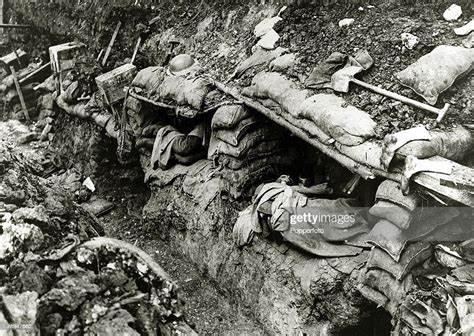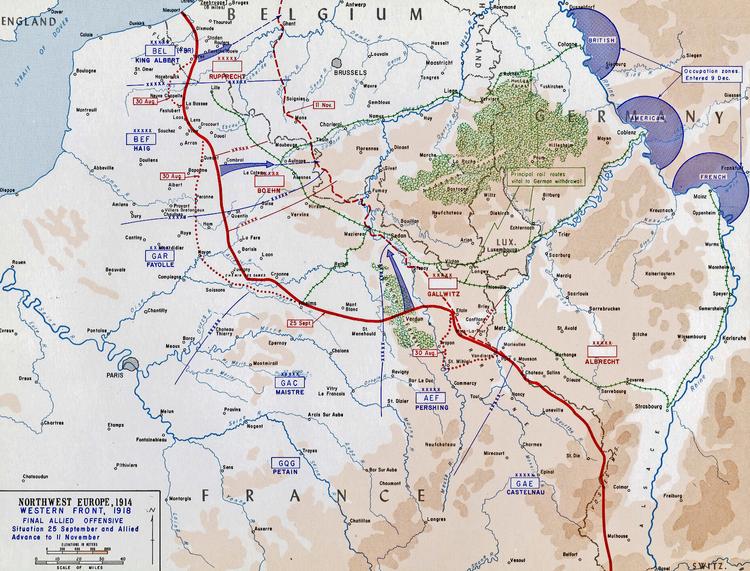WW1 The Western Front

Table of Context Title ..................1 Table of context..................2 Introduction..................3 ..................4 ..................5 Major General William Throsby Bridges..........6 ..................7 World War I ..................8 Experiences and impacts of WWI............9 Timeline ..................10 The Western Front ..................11 Bibliography..................12
World War One (WW1), The catastrophic event that impacted and caused an uproar to echo throughout the world. The Countries that fought in WW1 were Germany, Austria-Hungary and the Ottoman Empire against Great Britain, the United States, France, Russia, Italy, Japan, and Australia. The reasons why the First World War happened was due to the Secret Alliances, Nationalism, The Assassination of Archduke Franz Ferdinand, European Expansionism, Militarism, Nationalism, and Imperialism. Militarism: This is when a country has an expansion of their military to wage war this had increased tensions between European powers.


Introduction
Nationalism: Nationalism is an intense form of patriotism, or loyalty to one’s country, this also led to militarism, due to the build-up of an army causing high tensions in Europe until WW1 broke out. Imperialism: Imperialism is where one powerful nation takes control over several small nations and exploits them, several European nations had imperialism before WW1. Assassination of Franz Ferdinand: Gavrilo Princip had assassinated Franz Ferdinand and is from Obljaj (southern Europe). Alliances: The Alliances these were under the conditions if one is under the threat of danger then the other allies would help.

The alliances were France, Britain, Russia, Italy, Japan, and the United States Against the Central powers of Germany, Austria-Hungary, the Ottoman Empire, Bulgaria. Expansionism: Expansionism is states obtaining greater territory through military empire-building or colonialism, this was used by many of the powers in WW1 to try and overtake many territories in Africa and Europe. Australia had participated in WW1 when the First World War began when Britain and Germany went to war on August 4th, 1914. The running prime ministers of the time Joseph Cook and Andrew Fisher had pledged full support to Britain.

Major General William
Throsby Briges
Willam was Scottish born, Briges emigrated to Sydney with his parents in the year 1879, When WW1 had broke out, William already amassed over two decades in military service and experience. William was first chief of the Australian general staff in 1909 and by 1911 he had opened the Royal Military College in Duntroon. WW1, I had exploded, everyone was getting involved on a global scale. William Briges was tasked with the formation of on Australian contingent to send to Europe.

Subsequently, the AIF (Australian Imperial Force was born and Briges was the commander of the 1st division. The 1st Devision was the first to storm Anzac Cove, Briges foresaw the danger and demanded the evacuation of his men because he knew the oncoming slaughter.

The AIF wasn't evacuated, they stayed, and William Bridges made regular trips to the front firing lines, knowing the risks. Those risks would become a reality on May 15th Bridges was shot by a Turkish sniper and the bullet penetrated the femoral artery. Bridges died three days latter on a hospital ship where he was being treated. Bridges body made the journey back to Australia for his final resting place at Duntroon.
A quote from a professor at the Duntroon College: "Duntroon College is Briges... and something of that man still lingers in those old stone."
World War I

Experiences and impacts of WW1
World War I had many significant shortterm effects on the western front allied nations. Inflation is a crippling affect causing Australia to fall into debt from the post war expenditures of war, however Australia had the benefited it from being able to market and trade products internationally. Many Australians had also dug air raid bunkers due to the war, living in fear it would reach our shores. Australians also suffered a supply shortage of necessity products such as meat, sugar and butter.


Timeline
The Western Front
The Western Front was a horrifying experience for the soldiers, a terrible world event. The conditions were bad, no down time and the men were on deaths door every second they spent in those trenches. The condition of those trenches were horrific, due to the amount of fire, sickness and infections with lice all around. Trench foot was an infection due to having their feet in the cold water for long spans of time losing the nerve in their foot. Gunfire was popping off every second with people subject to trench warfare spanning over 750km in distance. The total deaths recorded in the Western Front were truly significant in the seven figures with four million deaths 46,000 being Australian men

Bibliography
Australian War Memorial. “First World War 1914–18 | the Australian War Memorial.” Awm.gov.au, Australian War Memorial, 2 June 2021, www.awm.gov.au/articles/atwar/first-world-war.
Department of Veterans' Affairs. “Australians on the Western Front 1916 to 1918 | Anzac Portal.”
Anzacportal.dva.gov.au, 20 Sept. 2021, anzacportal.dva.gov.au/wars-andmissions/ww1/where-Australiansserved/western-front.
Kelly, Martin. “5 Key Causes of World War I.” ThoughtCo, ThoughtCo, 26 Mar. 2020, www.thoughtco.com/causes-that-led-to-worldwar-i-105515.
Llewellyn, Jennifer, and Steve Thompson. “Nationalism as a Cause of World War I.” Alpha History, Alpha History, 7 Sept. 2020, alphahistory.com/worldwar1/nationalism/.
Volle, Adam. “Western Front | World War I.”
Encyclopedia Britannica, 6 Apr. 2023, www.britannica.com/event/Western-FrontWorld-War-I.
WW1 Ending of World War 1













